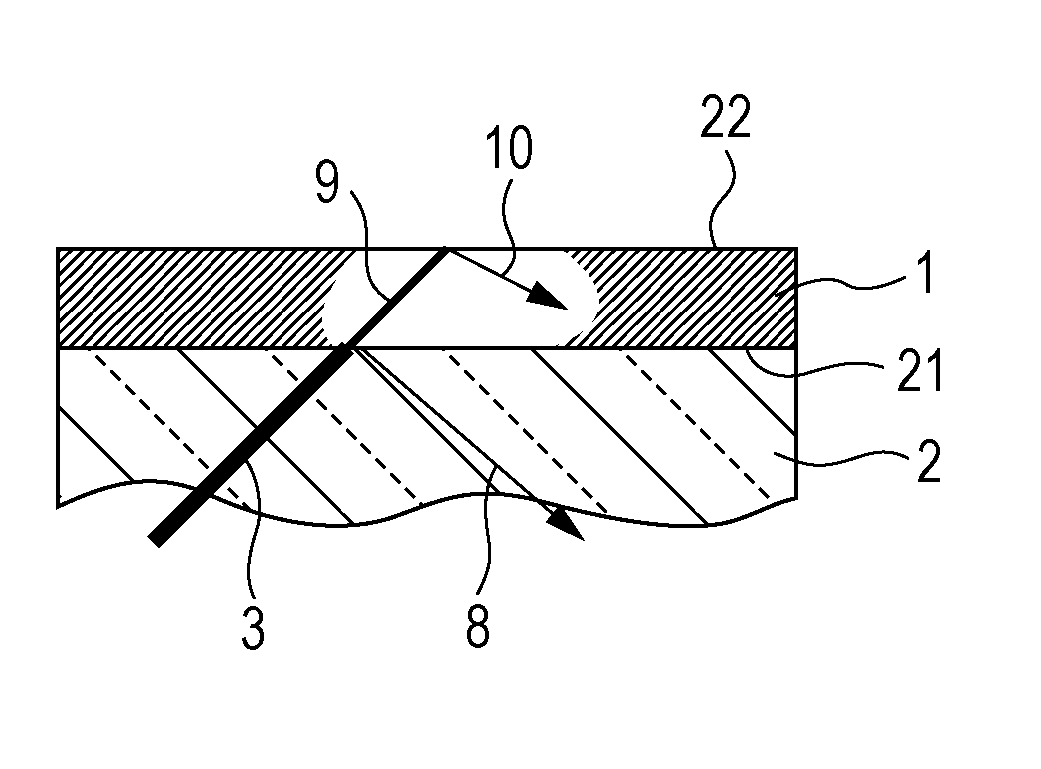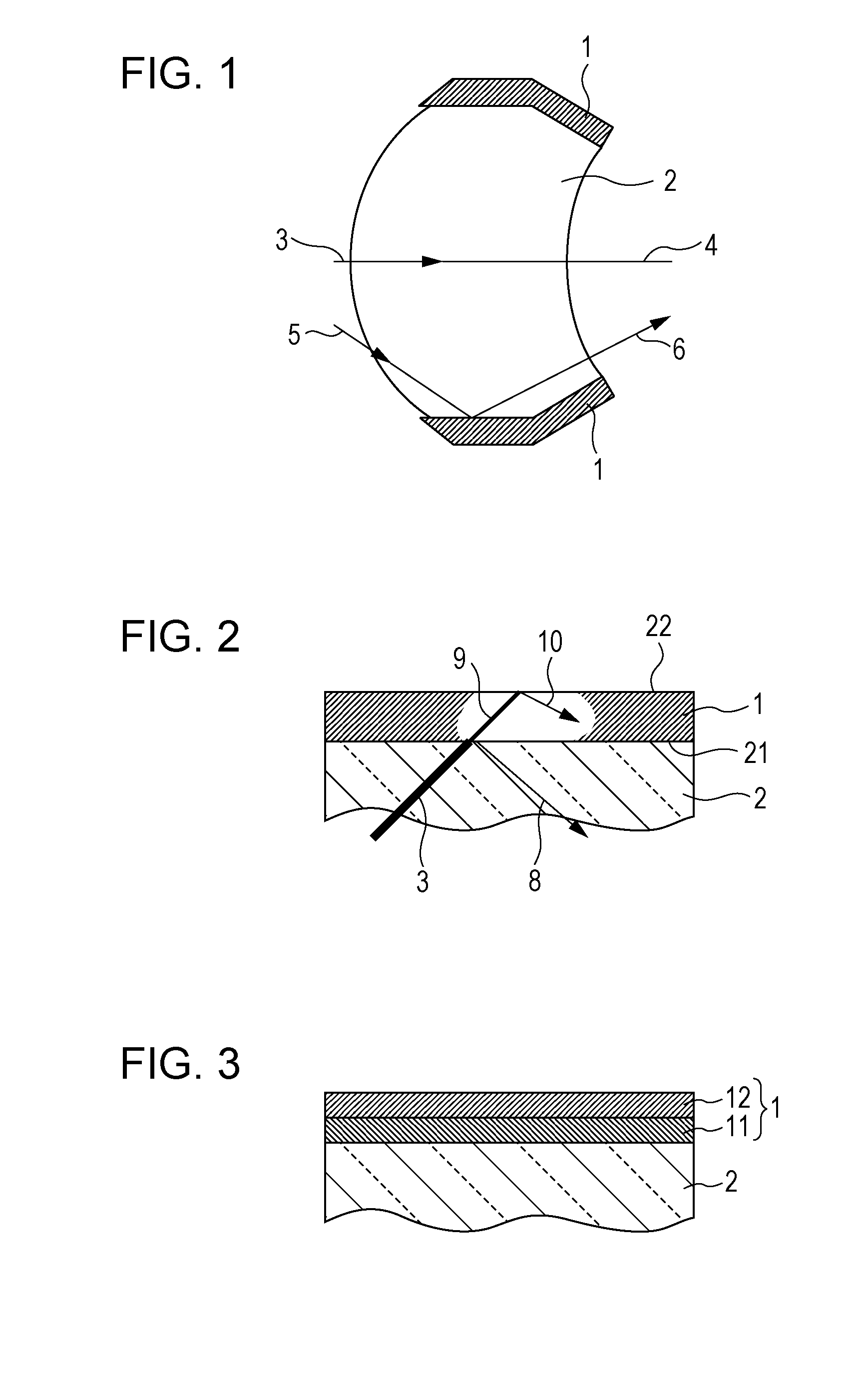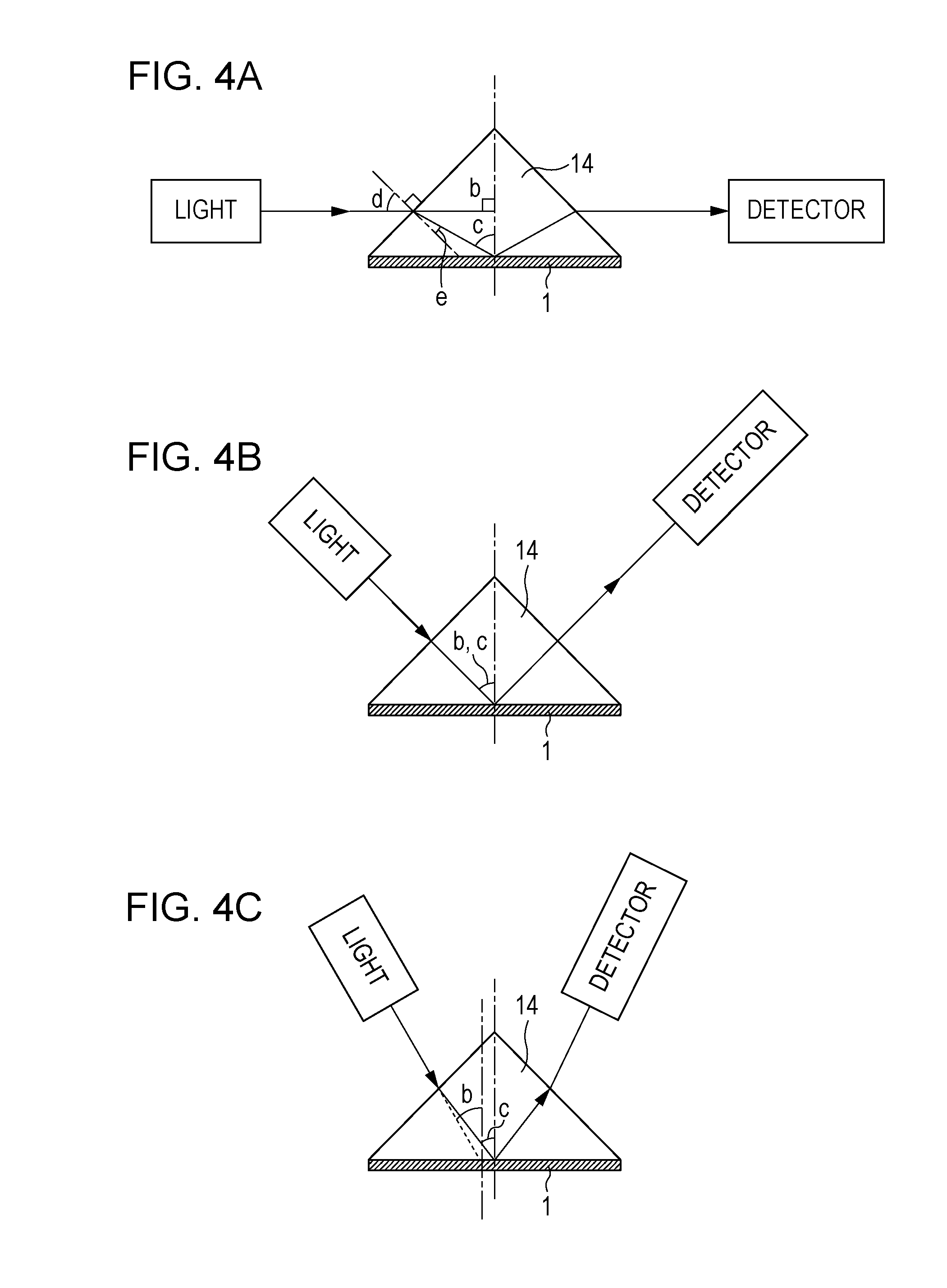Light-shielding film for optical element and optical element having light-shielding film
a technology of light shielding film and optical element, which is applied in the direction of spectral modifiers, spectacles/goggles, synthetic resin layered products, etc., can solve the problems of insufficient inhibition of reflection at the interface between the lens and the light shielding film, increase in first reflected light b>8/b>, etc., to achieve the reduction of the design clearance between the lens and the lens barrel, the effect of reducing the size of the lens and improving performan
- Summary
- Abstract
- Description
- Claims
- Application Information
AI Technical Summary
Benefits of technology
Problems solved by technology
Method used
Image
Examples
examples
[0063]Preferred examples of the present invention will be described below.
examples 1 to 24
[0064]Preparation of light-shielding coatings for optical element according to Examples 1 to 24, production of light-shielding films for optical element, and evaluation of optical properties were conducted as follows.
Preparation of Light-Shielding Coating for Optical Element
[0065]Tables 1 to 6 show resins, dyes, black pigments, non-black particles, solvents, coupling agents, hardeners, and their mixing ratios constituting light-shielding coatings for optical element A, B, C, D, E, F, G, H, I, J, K, L, M, N, O, R, S, T, U, V, W, X, Y, and AD. Light-shielding coating and light-shielding film for optical element A was used in Example 1; light-shielding coating and light-shielding film for optical element B was used in Example 2; light-shielding coating and light-shielding film for optical element C was used in Example 3; light-shielding coating and light-shielding film for optical element D was used in Example 4; light-shielding coating and light-shielding film for optical element E wa...
PUM
| Property | Measurement | Unit |
|---|---|---|
| wavelengths | aaaaa | aaaaa |
| wt % | aaaaa | aaaaa |
| wt % | aaaaa | aaaaa |
Abstract
Description
Claims
Application Information
 Login to View More
Login to View More - R&D
- Intellectual Property
- Life Sciences
- Materials
- Tech Scout
- Unparalleled Data Quality
- Higher Quality Content
- 60% Fewer Hallucinations
Browse by: Latest US Patents, China's latest patents, Technical Efficacy Thesaurus, Application Domain, Technology Topic, Popular Technical Reports.
© 2025 PatSnap. All rights reserved.Legal|Privacy policy|Modern Slavery Act Transparency Statement|Sitemap|About US| Contact US: help@patsnap.com



